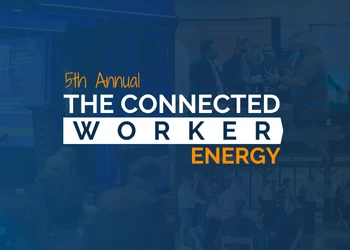Corrosion: The Deep And Ultra-Deepwater Problem
Add bookmark"Successful prolonged corrosion-free service of stainless steel in seawater requires sophisticated corrosion engineering, or enormous good fortune."
As traditional reserves deplete on and offshore, the oil industry is moving into increasingly deeper waters in the pursuit of hydrocarbons. As the industry digs deeper, the challenges that face subsea infrastructure increase markedly, none more so than the perennial issue of corrosion.
Deep water is usually considered by the industry as anything in excess of 3,000 ft (915 m), with ultra-deepwater classified as depths reaching past 5,000 ft (1,524 m).
While there are more than 600 wells currently operating in deepwater across the globe, ultra-deepwater exploitation is still limited. Trends suggest, however, that between now and 2015, capital expenditure on ultra-deepwater projects will pass the $200 billion mark, with three quarters of that money spent on essential subsea infrastructure and pipelines that will have to withstand the rigours of the ultra-deep sea environment.
Specific challenges of ultra-deepwater corrosion
The job of counter-corrosion methodology is, essentially, to minimize corrosion events through proactive monitoring of corrosion indicators such as water dew point and amine and ammonia salt formation, as well as mounting a quick response to deteriorating conditions.
One of the major challenges to corrosion management is the extreme pressure experienced at profound depths. On the surface, the atmospheric pressure exerted on objects is 14.7 pounds per square inch (psi). At a depth of 5000 feet, that pressure stress has increased more than 150 times, to roughly 2227 psi. Inspection can be carried out by human divers at shallow depths of less than 230 ft (70 metres), but beyond that, costly remotely operated vehicles (ROVs) need to be employed.
In addition to depth-related pressure constraints, the gamut of monitoring systems designed for use in topside infrastructure - such as thermal imaging, selective radiography, intelligent pigging, ultrasonic and microbial testing, fluid sampling, linear polarisation resistance, in situ mapping and potential probes - are not suited to operate in harsh marine environments.
As a consequence, until reliable marinisation of these analytical tools are developed, inspections will remain infrequent and the possibilities for corrosion build-up are significantly increased.
FEED as the answer to the corrosion problem?
As high costs and inaccessibility dominate deep and ultra deepwater maintenance and inspection, potential corrosion and integrity issues are best confronted in the design phase, rather that once the asset is operational.
Mitigating the onset of corrosion and material degradation with the selection of robust materials throughout the front-end engineering and design (FEED) phase is crucial. In this respect, six sigma and quality risk management tools - like failure modes and effects criticality analysis (FMECA) and inherently safe design (ISD) - that seek to eliminate, minimize and avoid hazards and risk, rather than simply controlling or managing them, are increasingly employed in the deep and ultra-deepwater arena.
The right tools for the job
Companies operating assets in the deep and ultra-deepwater realm a face a twofold conundrum when selecting the materials for subsea infrastructure: whether to spend less on steel and more on anti-corrosion agents during the lifespan of the asset in hand, or to build with high-cost corrosion-resistant alloys that will incur far less corrosion management costs in the course of the asset’s lifecycle.
Essentially, the choice is depended on the corrosive properties of the reservoir that the asset will be plugging into, and whether the operator involved is willing to spend up to 1000% more up-front for corrosion-resistant alloys.
It is generally thought that an informed corrosion management strategy would encompass both rigorous forethought with regards to materials selection, asset fabrication and corrosion assessment, as well as a considered approach to capital and operational expenditure throughout an asset's useable life.















